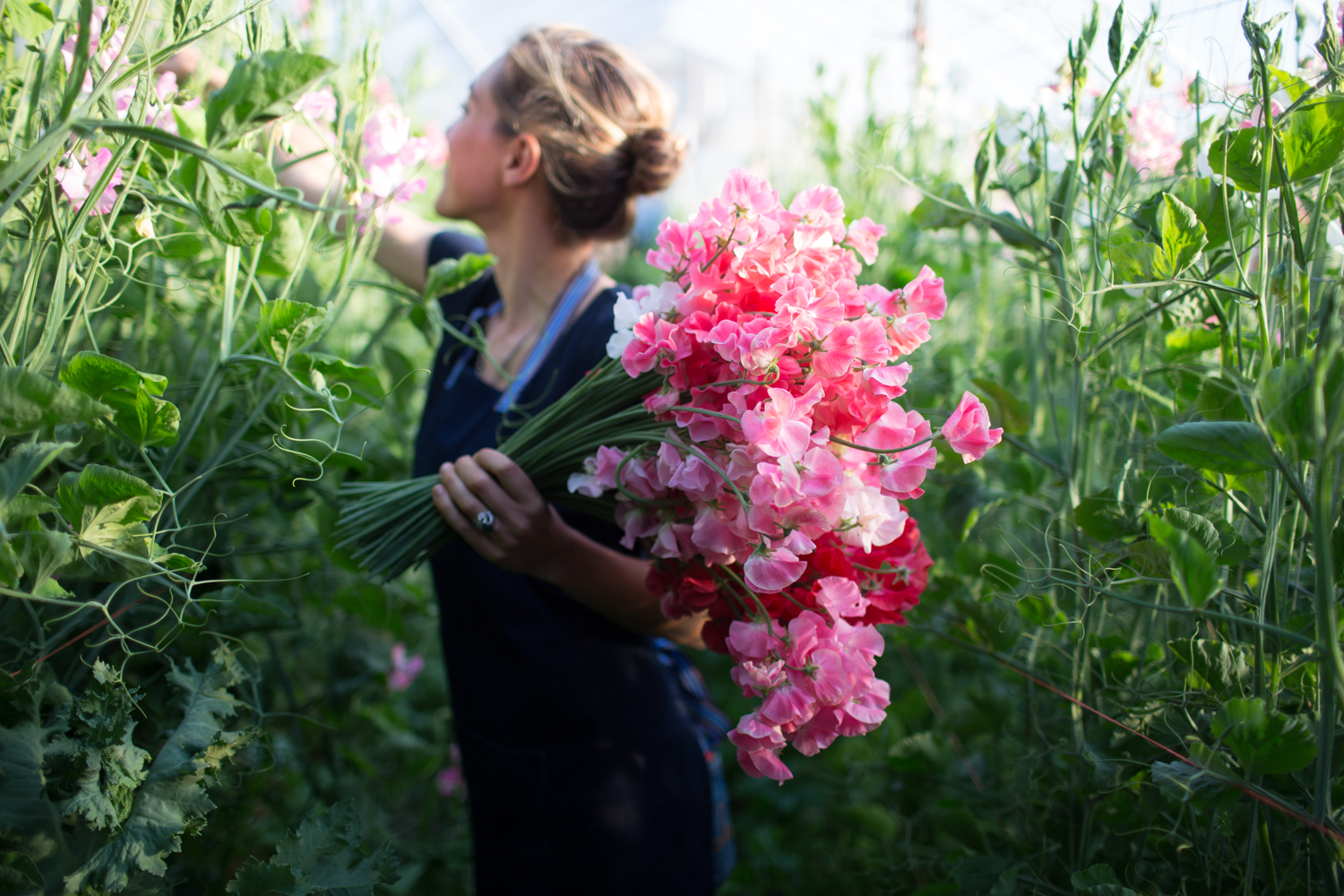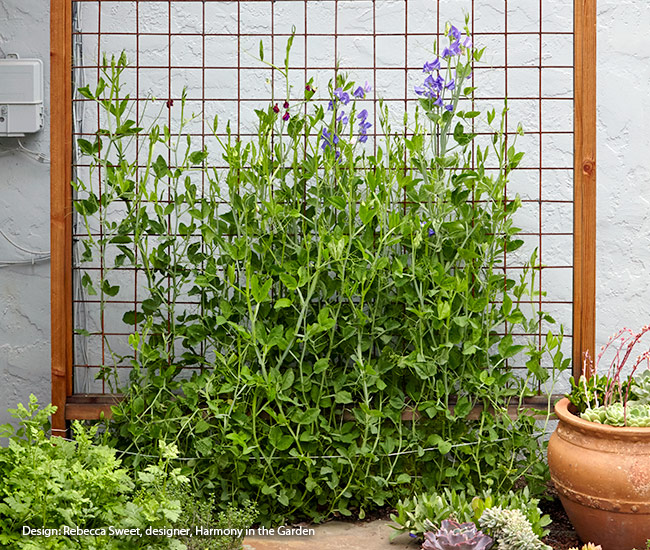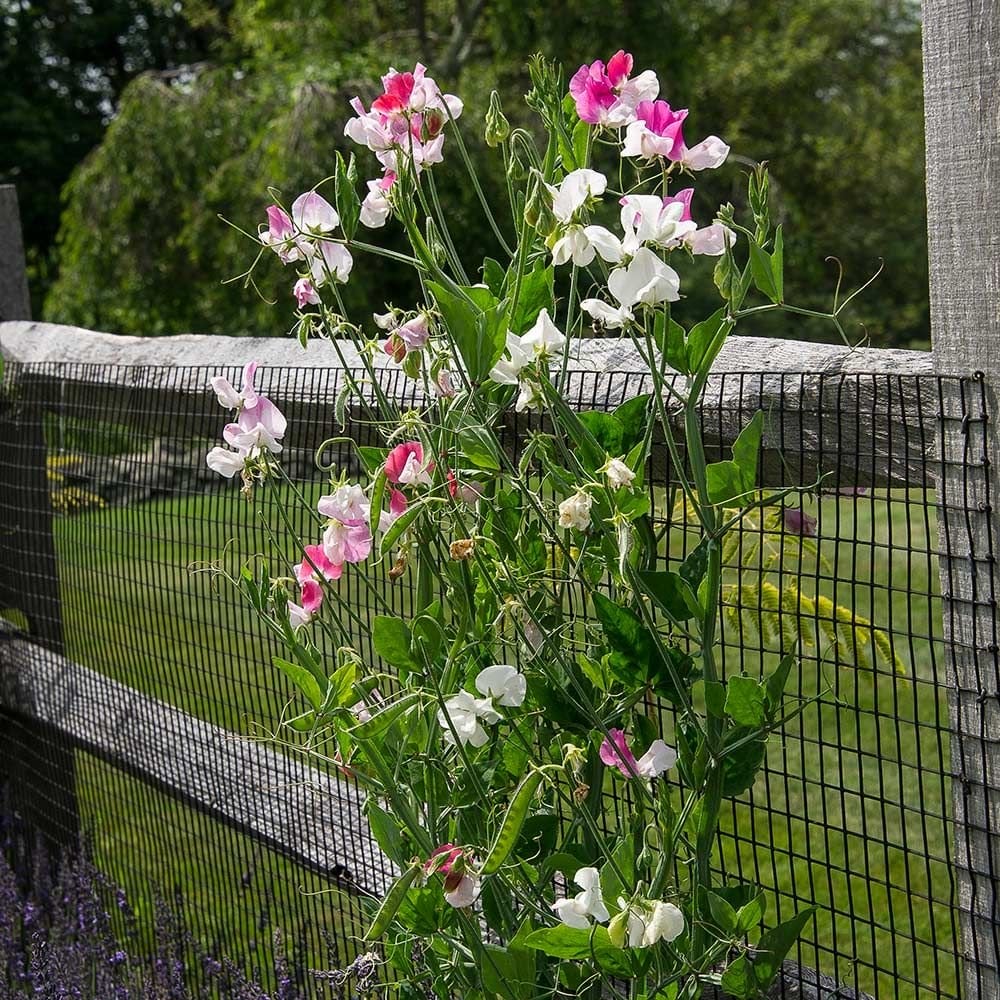Plant sweet pea seeds in early spring or fall. Ensure well-drained soil and full sun for optimal growth.
Sweet peas are popular for their vibrant colors and lovely fragrance. These climbing plants can enhance any garden space. To begin, choose a sunny location with well-drained soil. Soak seeds overnight to speed up germination. Plant seeds directly into the soil, spacing them about 2 inches apart.
Provide a trellis or support for the vines to climb. Water regularly but avoid waterlogging. Mulching helps retain soil moisture and control weeds. Regular deadheading encourages more blooms. With proper care, sweet peas can bloom from late spring to early summer, adding beauty and fragrance to your garden.

Credit: www.floretflowers.com
Choosing The Right Variety
Choosing the right variety of sweet peas is crucial for successful growth. Different types thrive in various climates and conditions. Knowing which variety suits your garden ensures vibrant blooms.
Popular Sweet Pea Types
There are many sweet pea varieties. Here are some popular ones:
- Old-Fashioned Sweet Peas: Known for their strong fragrance and delicate petals.
- Spencer Sweet Peas: These have large, wavy blooms and come in many colors.
- Cuthbertson Sweet Peas: Ideal for early blooming and have sturdy stems.
Climate Considerations
Understanding your climate is key to growing sweet peas successfully. Here’s a simple guide:
| Climate | Suitable Varieties |
|---|---|
| Cool Climates | Old-Fashioned, Spencer |
| Warm Climates | Cuthbertson |
| Hot Climates | Heat-tolerant varieties like ‘Royal Family’ |
Choose varieties that match your local weather. This ensures healthy growth and vibrant flowers.
Preparing The Soil
Growing sweet peas begins with preparing the soil. Healthy soil ensures your sweet peas thrive. This section will guide you through the necessary steps.
Soil Ph Requirements
Sweet peas prefer a soil pH between 6.0 and 7.5. Test your soil’s pH to ensure it falls within this range. You can use a soil test kit from a garden store.
Adjusting the soil pH may be necessary. To increase pH, add lime. To decrease pH, add sulfur. Follow package directions for best results.
Amending The Soil
Sweet peas need rich, well-draining soil. Adding compost or well-rotted manure improves soil quality. Mix these into the top 6 inches of soil.
Avoid waterlogged soil. Sweet peas can develop root rot in poorly drained soil. Adding sand or perlite helps improve drainage.
Here is a simple table to summarize the amendments:
| Soil Amendment | Purpose |
|---|---|
| Compost | Enhances nutrients and soil structure |
| Manure | Provides organic matter and nutrients |
| Sand | Improves drainage |
| Perlite | Increases aeration and drainage |
Ensure your soil is ready before planting sweet peas. Proper preparation leads to strong, healthy plants.
Planting Sweet Peas
Planting sweet peas can be a rewarding experience. These fragrant flowers add beauty and charm to any garden. Knowing the right way to plant them ensures a bountiful bloom.
Starting From Seeds
Starting sweet peas from seeds is simple. Follow these steps for successful germination:
- Soak the seeds: Place seeds in water for 24 hours.
- Sow the seeds: Plant seeds in pots filled with compost.
- Depth: Bury seeds 1 inch deep.
- Spacing: Space seeds 2 inches apart.
- Water: Keep the soil moist.
Seeds will sprout in 7-14 days. Ensure they receive plenty of light.
Transplanting Seedlings
Once seedlings are 3-4 inches tall, they are ready for transplanting.
| Step | Details |
|---|---|
| Choose a location: | Pick a sunny spot in your garden. |
| Prepare the soil: | Ensure soil is rich and well-drained. |
| Spacing: | Space seedlings 6 inches apart. |
| Plant depth: | Plant at the same depth they were in pots. |
| Watering: | Water immediately after transplanting. |
Adding support for the growing vines is essential. Use stakes or trellises to help them climb.
Watering Techniques
Watering your sweet peas the right way is crucial for healthy growth. Proper watering ensures your plants receive the moisture they need without drowning. Follow these simple yet effective tips to keep your sweet peas thriving.
Optimal Watering Schedule
Sweet peas need a regular watering schedule to stay healthy.
- Water your sweet peas deeply twice a week.
- Ensure the soil is moist but not soggy.
- Morning watering is best to avoid fungal diseases.
| Day | Watering Frequency |
|---|---|
| Monday | Water deeply |
| Thursday | Water deeply |
Avoiding Overwatering
Overwatering can harm your sweet peas. Too much water leads to root rot.
- Check soil moisture before watering.
- Use a moisture meter to ensure proper levels.
- Water less during rainy periods.
Signs of overwatering include yellow leaves and wilting. Adjust your watering if these symptoms appear.
Fertilizing For Growth
Fertilizing sweet peas ensures their vibrant growth and abundant blooms. Proper nutrients help sweet peas develop strong roots and stunning flowers. This section covers the best fertilizers and how to apply them.
Best Fertilizers
Choosing the right fertilizer is crucial. Here are some top options:
- Balanced Fertilizer (10-10-10): Provides equal parts of nitrogen, phosphorus, and potassium.
- High-Phosphorus Fertilizer: Promotes blooming and strong flower development.
- Organic Fertilizers: Such as compost or well-rotted manure, enhance soil health.
Use the table below for specific fertilizer recommendations:
| Fertilizer Type | N-P-K Ratio | Benefits |
|---|---|---|
| Balanced Fertilizer | 10-10-10 | Provides overall growth |
| High-Phosphorus Fertilizer | 5-10-5 | Boosts flower production |
| Organic Fertilizers | Varies | Improves soil health |
Application Methods
Applying fertilizer correctly ensures sweet peas receive the nutrients they need. Follow these methods for best results:
- Pre-Planting: Mix fertilizer into the soil before planting seeds.
- Top Dressing: Sprinkle fertilizer around the base of the plants.
- Liquid Fertilizing: Dilute liquid fertilizer with water and apply during watering.
Regular feeding is essential. Consider a bi-weekly schedule for feeding sweet peas.
Adjust the frequency based on plant health and soil condition. Healthy, well-fed sweet peas produce beautiful blooms all season long.
Pruning And Training
Pruning and training sweet peas are essential for healthy growth and beautiful blooms. Proper care can lead to a more vibrant and prolonged flowering period. Follow these steps to ensure your sweet peas flourish.
Pruning Tips
Pruning sweet peas encourages strong growth and more flowers. Here are some tips:
- Pinch out the growing tips when plants are 6 inches tall.
- Remove side shoots to focus energy on main stems.
- Cut off dead flowers to promote new blooms.
Regular pruning keeps your sweet peas healthy and productive. It also helps in preventing pests and diseases.
Supporting Vines
Supporting vines is crucial for sweet peas. They are climbers and need support to grow upwards. Here’s how to do it:
- Use a trellis or netting for support.
- Gently tie stems to support with soft garden twine.
- Check supports regularly to ensure vines are secure.
Ensure supports are sturdy to handle the weight of the plants. This helps in keeping the plants upright and prevents damage from wind or rain.
| Tool | Purpose |
|---|---|
| Pruning Shears | Cutting dead flowers and side shoots |
| Garden Twine | Tying stems to supports |
| Trellis | Providing support for climbing vines |
Following these pruning and training tips ensures healthy, vibrant sweet peas. Happy gardening!
Pest And Disease Management
Sweet peas are beautiful, but they can face pests and diseases. Managing these issues keeps your plants healthy. Follow these tips to protect your sweet peas.
Common Pests
Some pests love sweet peas. Here are the most common ones:
- Aphids: Small insects that suck sap from plants. They can spread viruses.
- Slugs and Snails: They eat leaves and stems. They can destroy young plants overnight.
- Thrips: Tiny insects that cause silver streaks on leaves and flowers.
- Spider Mites: These pests cause yellow spots on leaves. They thrive in dry conditions.
Disease Prevention
Preventing diseases is easier than treating them. Follow these steps:
- Choose Resistant Varieties: Some sweet pea varieties resist diseases better.
- Water Properly: Water at the base of the plant. Keep leaves dry.
- Ensure Good Air Circulation: Space plants properly. This reduces humidity and discourages fungi.
- Remove Infected Plants: Remove and destroy any diseased plants. This stops the spread.
- Rotate Crops: Avoid planting sweet peas in the same spot every year. This prevents soil-borne diseases.
By managing pests and diseases, your sweet peas will thrive. Enjoy their beauty all season long.

Credit: www.gardengatemagazine.com
Harvesting And Maintenance
Sweet peas are beautiful flowers that add charm to any garden. Proper harvesting and maintenance are crucial for their healthy growth. This section will guide you on how to harvest and care for your sweet peas post-harvest.
When To Harvest
Knowing the right time to harvest is essential. Harvest sweet peas when the flowers are just starting to open. This ensures the longest vase life.
- Pick flowers early in the morning.
- Use sharp scissors or pruning shears.
- Cut stems at an angle.
Harvesting regularly encourages more blooms. Aim to harvest every few days.
Post-harvest Care
Proper care after harvesting keeps sweet peas fresh longer. Follow these tips:
- Place stems in water immediately.
- Remove any leaves below the water line.
- Change the water daily.
Using a floral preservative can also extend the life of your sweet peas. Keep the flowers in a cool, shaded area away from direct sunlight.
| Tip | Benefit |
|---|---|
| Harvest early morning | Prolongs vase life |
| Use sharp tools | Prevents stem damage |
| Change water daily | Reduces bacterial growth |
Regular maintenance is key to a thriving sweet pea garden. Happy harvesting!

Credit: www.whiteflowerfarm.com
Frequently Asked Questions
When Is The Best Time To Plant Sweet Peas?
The best time to plant sweet peas is in early spring. Plant them when the soil is workable but not waterlogged.
How Do You Prepare Soil For Sweet Peas?
To prepare soil for sweet peas, enrich it with compost. Ensure the soil is well-draining and slightly alkaline.
Do Sweet Peas Need Full Sun Or Shade?
Sweet peas thrive in full sun. They need at least six hours of direct sunlight daily for optimal growth.
How Often Should You Water Sweet Peas?
Water sweet peas regularly, keeping the soil consistently moist. Avoid waterlogging, as it can harm the roots.
Conclusion
Growing sweet peas is a rewarding experience. With proper care, they flourish beautifully. Remember to water them regularly and provide support. Their vibrant colors and sweet fragrance make gardens delightful. Follow these steps, and enjoy a stunning display of sweet peas in your garden.
Happy gardening!
